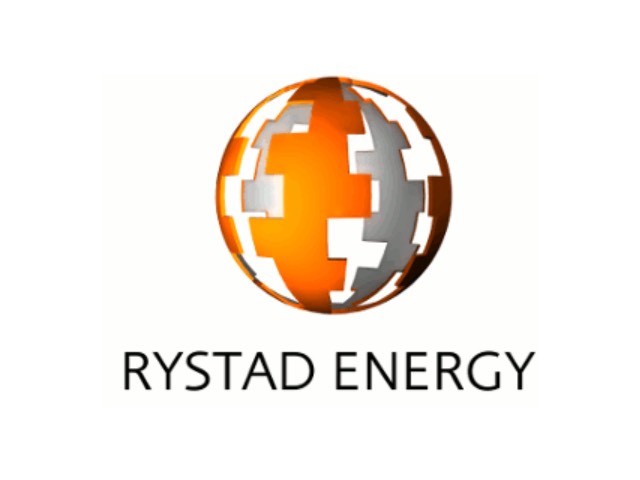Bolivian gas is set to become a scarce commodity in coming years and as a result, importers Argentina and Brazil will face a challenge. The two countries, whose combined gas demand is set to grow to 90 billion cubic meters (Bcm) in 2025 from an estimated 76.5 Bcm in 2020, will not only need to replace lost import volumes, but will also need to make up for a larger supply shortfall as domestic production will be insufficient, a Rystad Energy report finds.
Rystad Energy estimates Argentina’s gas demand in 2020 at 52.5 Bcm and Brazil’s at 24 Bcm. Their combined demand is set to grow to almost 90 Bcm in 2025, as Argentina’s will grow to 60 Bcm and Brazil’s to 29.6 Bcm that year.
However, domestic supply lags behind demand. Brazil’s own supply is estimated at just 20.1 Bcm for 2020 and Argentina’s at 42.2 Bcm, translating to a combined 62.3 Bcm of supply from the two countries – 14.2 Bcm below demand levels this year. The gap will only widen in 2025, as combined supply will rise to Jut 72 Bcm, creating an import need of an additional 18 Bcm to match demand.
Currently, Bolivian gas exports to Argentina and Brazil are estimated at a combined 9 Bcm for 2020. Bolivia’s declining gas production and increasing domestic demand is expected to drive exports to its two neighbors to just 3 Bcm in 2025, a third of current levels. This means that in 2025, the two South American powerhouse economies will still need to source an additional 15 Bcm of gas, likely liquefied natural gas (LNG).
“Even though Argentina and Brazil have extensive gas resources, a lack of pipeline interconnections and low investments pose hurdles in meeting rising domestic demand. This, coupled with lower gas exports from their traditional trading partner Bolivia, has triggered the need for a significant increase in LNG imports in the near future,“ says Rahul Choudhary, upstream analyst at Rystad Energy.

Learn more in Rystad Energy’s GasMarketCube.
Both nations hold large gas resources of their own; in Brazil, this is in the form of offshore associated gas, while in Argentina this is in the form of shale gas. However, developing these resources requires time, especially given the limited infrastructure and high costs of development. Thus, in the current low-price environment LNG provides a cheaper alternative, given the sufficient import infrastructure that already exists in the region.
Brazil is set to be at the center of LNG demand in Latin America over the next few years as the country expects natural gas to play a greater role in power generation. The country currently has three regasification units in operation with a total annual regasification capacity of around 15 Bcm. This capacity is set to grow as the three new projects are in advance stages of development, adding a total estimated capacity of 15 Bcm.
Of these three projects, the Sergipe unit came online in early 2020 while the Acu Port project is under construction and is expected to come online by 2021. The third project involves the expansion of the capacity of an existing LNG terminal at Rio de Janeiro, from 7 Bcm to 11 Bcm, which is expected to be completed by late 2020. Argentina is also looking to bolster its LNG import capacity, increasing its regasification capacity by 6 Bcm at its existing LNG terminal.
Apart from Brazil and Argentina, Chile and Uruguay also each have an LNG regasification terminal set to come online in the near future. Chile and Uruguay plan to reduce their dependence on Argentinian gas imports as Argentina has not been able to provide a stable, uninterrupted supply of gas due to its fluctuating supply and rising domestic demand.
In Latin America, LNG prices have become more competitive in comparison to gas imported via pipeline. Since 2019, imported LNG prices in Brazil have been lower than domestically produced gas, as well as gas imported from Bolivia. In 2019 the price of gas imported from Bolivia averaged $8 per thousand cubic feet (kcf) while LNG import costs averaged $5.50 per kcf. In 2020, Bolivian gas came under significant pressure as LNG prices dropped below $4 per kcf, while Bolivian prices remained above $7 per kcf. Although LNG prices are expected to rise with the post-pandemic recovery of global demand, they are likely to remain well below prices for imported Bolivian gas in the future.
Why Bolivian exports are declining:
In 2014, Bolivia recorded its highest gas production, but since then the country’s output has plummeted. Given Bolivia’s maturing fields and in the absence of any recent discoveries, production declined by almost 25% in 2019, a year when Brazil and Argentina imported close to 70% of produced gas.
Bolivian gas supply also took a hit due to the lack of investment in the hydrocarbon sector in the country. In 2019, the country announced a 30% reduction in its gas reserves from the previously estimated 280 Bcm down to 200 Bcm. This led to a decline in exports as the country catered to its own steadily rising gas demand. The low supply, coupled with recent political instability, has led importers to avoid any long-term contracts in the country.
Furthermore, Bolivia’s contract to supply a minimum of 9 Bcm of gas annually to Petrobras expired in December 2019. Petrobras did sign an extension agreement in 2020 with Bolivia, but only after cutting the original contracted minimum volume by 60% to only 3.6 Bcm. Bolivia also exports pipeline gas to Argentina under a supply contract, which will expire in 2026. However, Argentina is also not very inclined to buy Bolivian gas in the future, as it plans to revitalize its domestic production.
For more analysis, insights and reports, clients and non-clients can apply for access to Rystad Energy’s Free Solutions and get a taste of our data and analytics universe.








































